The key benefit of using the FIFO method is that it best reflects the current value of inventory on hand. Since ending inventory is valued using recent purchase costs, FIFO inventory aligns closely with current replacement costs. The first-in, first-out (FIFO) formula provides a straightforward approach to achieve this accuracy, directly linking inventory costs to revenue generation. For inventory tracking purposes and accurate fulfillment, ShipBob uses a lot tracking system that includes a lot feature, allowing you to separate items based on their lot numbers.
- As we will discuss below, the FIFO method creates several implications on a company’s financial statements.
- However, in order for the cost of goods sold (COGS) calculation to work, both methods have to assume inventory is being sold in their intended orders.
- These articles and related content is the property of The Sage Group plc or its contractors or its licensors (“Sage”).
- Since First-In First-Out expenses the oldest costs (from the beginning of inventory), there is poor matching on the income statement.
- To find the cost valuation of ending inventory, we need to track the cost of inventory received and assign that cost to the correct issue of inventory according to the FIFO assumption.
Typical economic situations involve inflationary markets and rising prices. In this situation, if FIFO assigns the oldest costs to the cost of goods sold, these oldest costs will theoretically be priced lower than the most recent inventory purchased at current inflated prices. For tax purposes, FIFO assumes that assets with the oldest what is the difference between depreciation and amortization costs are included in the income statement’s cost of goods sold (COGS). The remaining inventory assets are matched to the assets that are most recently purchased or produced. First in, first out (FIFO) accounting is an inventory accounting method that assumes the first goods that enter your inventory are the first goods to leave it.
Understanding the FIFO Method in Financial Accounting
Also, through matching lower cost inventory with revenue, the FIFO method can minimize a business’ tax liability when prices are declining. Businesses would use the FIFO method because it better reflects current market prices. This is achieved by valuing the outstanding inventory at the cost of the most recent purchases. The FIFO method can help ensure that the inventory is not overstated or understated. Generally speaking, FIFO is preferable in times of rising prices, so that the costs recorded are low, and income is higher. Contrarily, LIFO is preferable in economic climates when tax rates are high because the costs assigned will be higher and income will be lower.
It was designed so that all businesses have the same set of rules to follow. GAPP sets standards for a wide array of topics, from assets and liabilities to foreign currency and financial statement presentation. Going by the LIFO method, Ted needs to go by his most recent inventory costs first and work backwards from there.
Pro: Often reflects actual inventory movement
Adopting the FIFO method aligns with accounting best practices under GAAP (generally accepted accounting principles). FIFO inventory accounting leads to financial reporting that reflects the true liquidation value of inventory assets. Overall, embracing FIFO supports transparency and accuracy in financial analysis.
What is LIFO vs. FIFO?
The lower COGS flows directly into higher net income on the income statement. FIFO impacts key financial statements and metrics like net income, inventory valuation, and cost of goods sold. By understanding how the FIFO method works, businesses can more accurately track inventory costs over time.
In this way, FIFO matches sales to the oldest costs first, resulting in the most recent costs being used to value ending inventory. In periods of rising prices, FIFO results in higher net income than LIFO. The opposite is true in falling price environments – LIFO shows higher profits compared to FIFO. GAAP (Generally Accepted Accounting Principles) and IFRS (International Financial Reporting Standards).
In most companies, this assumption closely matches the actual flow of goods, and so is considered the most theoretically correct inventory valuation method. The FIFO flow concept is a logical one for a business to follow, since selling off the oldest goods first reduces the risk of inventory obsolescence. The FIFO (First In, First Out) method is an important inventory accounting technique for achieving accurate financial reporting. By matching the oldest costs of goods sold against revenues, FIFO presents a fair and consistent picture of ending inventory balances and cost of goods sold on financial statements. The FIFO method better matches current revenues with the actual oldest costs, resulting in a more accurate and meaningful financial statement presentation than alternative inventory methods like LIFO.
Weighted Average vs. FIFO vs. LIFO: An Example
Instead of a company selling the first item in inventory, it sells the last. During periods of increasing prices, this means the inventory item sold is assessed a higher cost of good sold under LIFO. As a result, a company’s expenses are usually higher in these conditions, meaning net income is lower under LIFO compared to FIFO during inflationary periods.
Investors and banking institutions value FIFO because it is a transparent method of calculating cost of goods sold. It is also easier for management when it comes to bookkeeping, because of its simplicity. It also means the company will be able to declare more profit, making the business attractive to potential investors. In jurisdictions that allow it, the LIFO allows companies to list their most recent costs first. Because expenses rise over time, this can result in lower corporate taxes.
To do that, we need to see the cost of the most recent purchase (i.e., 3 January), which is $4 per unit. Here’s a summary of the purchases and sales from the first example, which https://intuit-payroll.org/ we will use to calculate the ending inventory value using the FIFO periodic system. The average cost method produces results that fall somewhere between FIFO and LIFO.
This approach is useful in an inflationary environment, where the most recently-purchased higher-cost items are removed from the cost layering first, while older, lower-cost items are retained in inventory. This means that the ending inventory balance tends to be lower, while the cost of goods sold is increased, resulting in lower taxable profits. Therefore, we can see that the balances for COGS and inventory depend on the inventory valuation method. For income tax purposes in Canada, companies are not permitted to use LIFO. As we will discuss below, the FIFO method creates several implications on a company’s financial statements. The inventory valuation method opposite to FIFO is LIFO, where the last item purchased or acquired is the first item out.
With this remaining inventory of 140 units, let’s say the company sells an additional 50 items. The cost of goods sold for 40 of these items is $10, and the entire first order of 100 units has been fully sold. The other 10 units that are sold have a cost of $15 each, and the remaining 90 units in inventory are valued at $15 each (the most recent price paid).
Knowing what items you have, what you sold, and what it’s all worth is essential to the health of inventory management businesses. When a business buys identical inventory units for varying costs over a period of time, it needs to have a consistent basis for valuing the ending inventory and the cost of goods sold. LIFO usually doesn’t match the physical movement of inventory, as companies may be more likely to try to move older inventory first. However, companies like car dealerships or gas/oil companies may try to sell items marked with the highest cost to reduce their taxable income. So, which inventory figure a company starts with when valuing its inventory really does matter.

